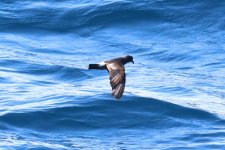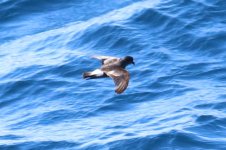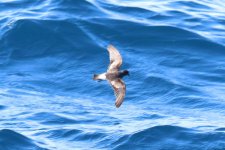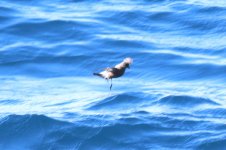Hi All, pls kindly share your thoughts on this storm petrel that we saw on a pelagic near Sagres in early October. We were supposed to have seen "only" the European and Wilson's storm petrels on that trip. But among the tonnes of pictures that I took on that day I have now found this bird - and I note that it has clear white flashes on the upperwings (which should exclude the European) and at the same is too short-legged for a Wilson's.
I was wondering whether this could be a Band-rumped storm petrel (although the white band appears to be too broad for band-rumped)?..
I would very much welcome your thoughts. Thanks!
I was wondering whether this could be a Band-rumped storm petrel (although the white band appears to be too broad for band-rumped)?..
I would very much welcome your thoughts. Thanks!










